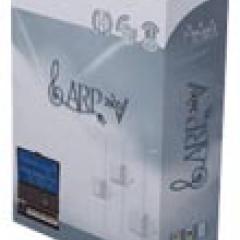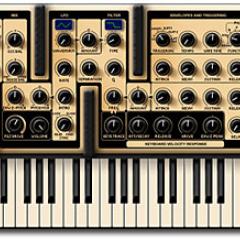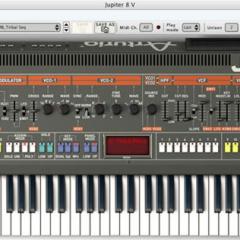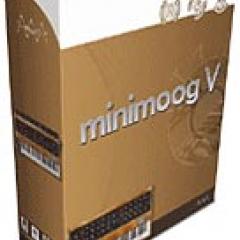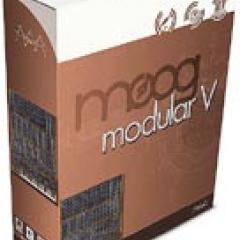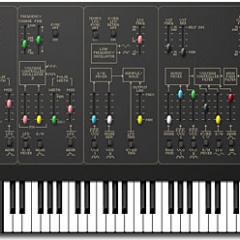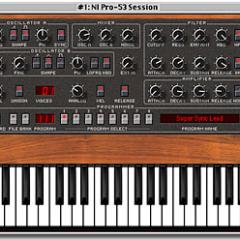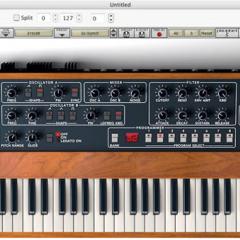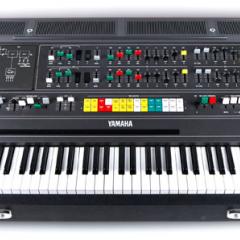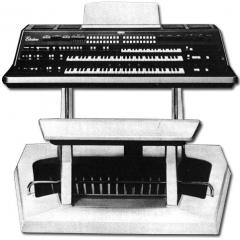Arturia CS-80V
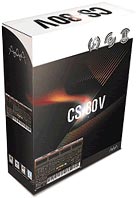
There once was a 200 pound beast of a classic analog synthesizer used and coveted by some of music's greatest players and synthesists since the 1970's. That synth, almost impossible to find and afford in stable working condition these days, is known as the Yamaha CS-80. It was Yamaha's flagship polyphonic analog synthesizer during it's hey-day, and now it can be yours thanks to Arturia. Arturia has developed "TAE" - "True Analog Emulation" which they have employed in their Minimoog V and Moog Modular V software synthesizers and now, in the CS-80V as well. The CS-80V is available for Mac or PC and is compatible with all major formats (VST, DXi, Audio Units, MAS, RTAS, HTDM, and more).
The CS-80V is a brilliant and faithful recreation of the original CS-80 in looks and sound, with a few welcome additions that make the CS-80V even better than the original, and at only a mere fraction of the CS-80's original and current second-hand prices! Some of these new features include additional LFO's, an Arpeggiator, Stereo Delay, a flexible Modulation Matrix, and most importantly - MIDI Sync options! Arturia's "TAE" sounds wonderful and the CS-80V sounds very warm and analog. Visually, the CS-80V is very large (1024x768 resolution needed) but beautifully recreates the front panel of the original CS-80, complete with 61-note keyboard, ribbon controller; it even has virtual built-in spinning fans which are an instant turn-on for any software synth freak!
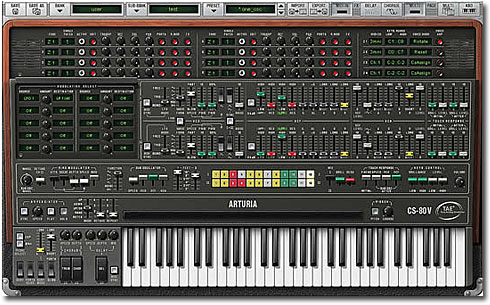
The original CS-80 had a unique synth architecture in that it was basically two discrete 8-voice polyphonic synths. A quick glance at the front panel shows two rows of identical sets of controls and sliders for Signal Paths I & II. Each Signal Path has a single oscillator, high and lowpass filters, a VCA section and keyboard velocity/aftertouch response controls. Each Path also features independent noise generators and LFO mode selectors. The two Signal Paths can be layered or played individually. A few basic effects including Ring Modulation, Tremolo, and Chorus can be applied globally to both Signal Paths.
The Oscillator (VCO) section offers six waveforms (sine, saw up, saw down, square, noise, and random) and adjustable Pulse-Width Modulation and Noise level. The Oscillator can be modulated by the LFO in one of three modes: free, triggered, or mono. The LFO triggering can also be sync'd to MIDI for each Signal Path. The two oscillator sections can be "Linked" so adjusting one's settings affects both the same, and they can be sync'd together as in the traditional sense of oscillator sync.
The VCF (filter) section is unique and very rich. There are switchable 12 or 24dB/oct highpass and lowpass filters available in series (one after the other) with adjustable Cutoff and Resonance controls. The Highpass and Lowpass filters can be individually turned on and off. There are also Level, Attack, Decay, and Release envelope controls for the filter. The VCA section offers standard Attack, Decay, Sustain, and Release envelope controls as well as VCF and VCA Level sliders.
Then we get to the global controls that affect both Signal Paths. For an LFO, the original CS-80 had just a simple triangle wave sub-oscillator. The new CS-80V employs an LFO with the same waveform shapes as the VCO's (note: the LFO is labelled as the Sub-Oscillator on both the CS-80 and CS-80V). The LFO is simultaneously assignable to the VCO, VCF and VCA sections! The Ring Modulator section offers adjustable Attack, Decay, Depth, Speed, and Mod controls. To the left of the keyboard is the effects section: Chorus and Tremolo as well as performance effects such as Portamento and Glissando are all here. The new addition of a stereo Delay with MIDI sync capability is a great enhancement. An Arpeggiator has also been added to the CS-80V (similar to that in the Minimoog V) with MIDI sync as well as adjustable speed and Up, Down, Up/Down, Random, and Notes played patterns adjustable over a 4-octave range and with up to 4 repeats (# of repeats before moving pattern to next octave). There are also Transpose sliders for each oscillator, global "Brilliance" and "Resonance" and Osc 1+2 Mix controls, keyboard touch response controls, and the original's cool Ribbon Controller for pitch bending.
Under the hood are a few major upgrades that really bring the CS-80 into the 21st century! The original CS-80 had its VCO-VCF-VCA signal flow diagramed on it's front panel where it housed its preset programming section. Pop it open on the CS-80V to reveal the Modulation Matrix. Here you can route up to 10 different sources (LFOs, Envelope Generators, Ribbon Controller, etc.) to modulate almost any of the CS-80V's synth parameters. This just gives you tremendous flexibility that the original never offered. Speaking of upgrades, the memory on the original was severely limited, but the CS-80V has virtually unlimited patch storage, and ships with over 400 patches designed by famous artists (Bass, EFX, Leads, Pads, Horns, Ambient, Sequences, Percussion, Keyboards, Guitars, Organs, Strings, and more).
Finally, a Voice Control section allows you to control each of it's eight voices independently! Each voice can be assigned to 1 of 4 keyboard zones or turned off, transposed, de-tuned, panned, mixed, and more! They can also be assigned to up to 4 different MIDI channels for multitimbral use, and even different patches can be assigned to each voice so you can cycle through patches as you play! All of these flexible and functional new features integrate seamlessly into the CS-80V's design, and are simple enough to navigate and use.
Arturia's CS-80V is a must have software synth for anyone looking for a very warm and very classic analog sound. Everything about the original CS-80, even its quirks are recreated here with stunning detail and sonic quality. Few software synthesizers offer such warm analog sounds as well as the chance to learn about the unique and classic instrument that put Yamaha on the map of analog synthesizers.
Demos & Media
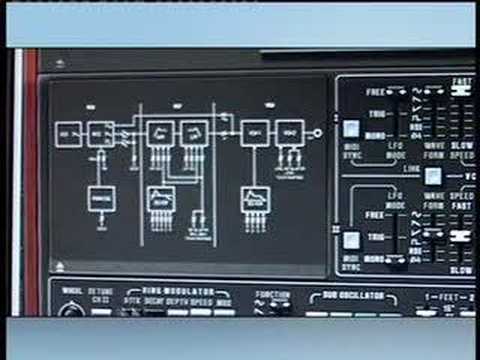
Specifications
"TAE" - No aliasing from 0.1 Hz to 16 kHz, 64-bit floating point precision, Sampling rate: up to 96 kHz
Resources
Images from Arturia.
